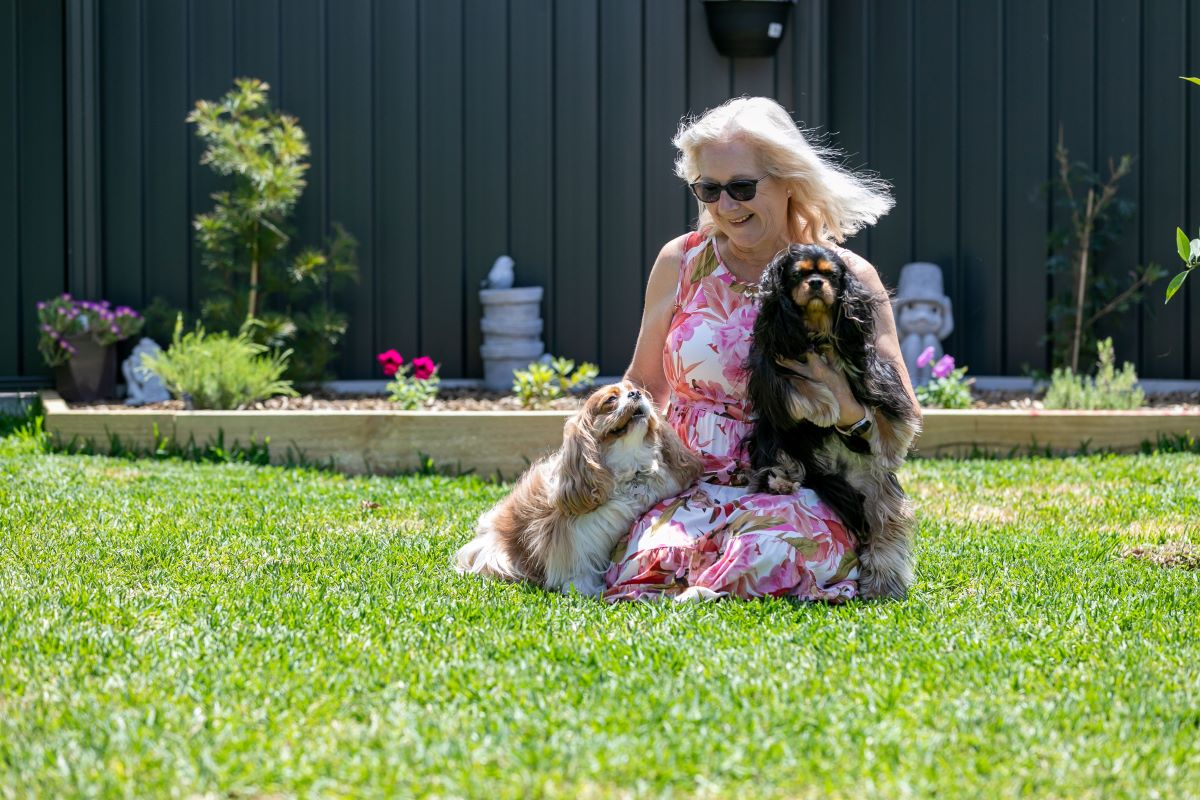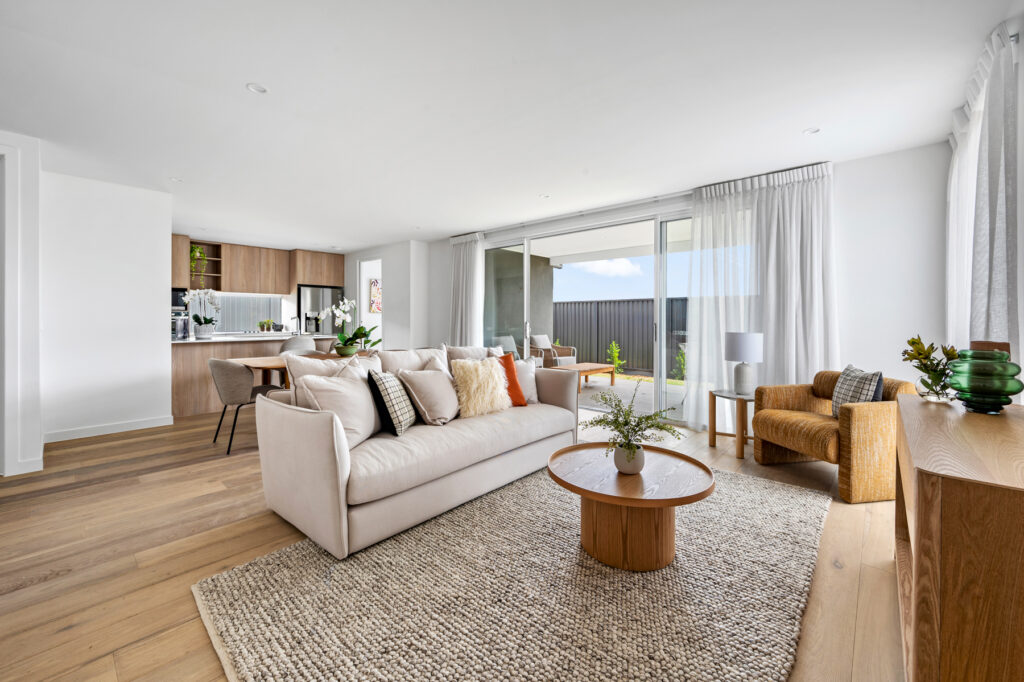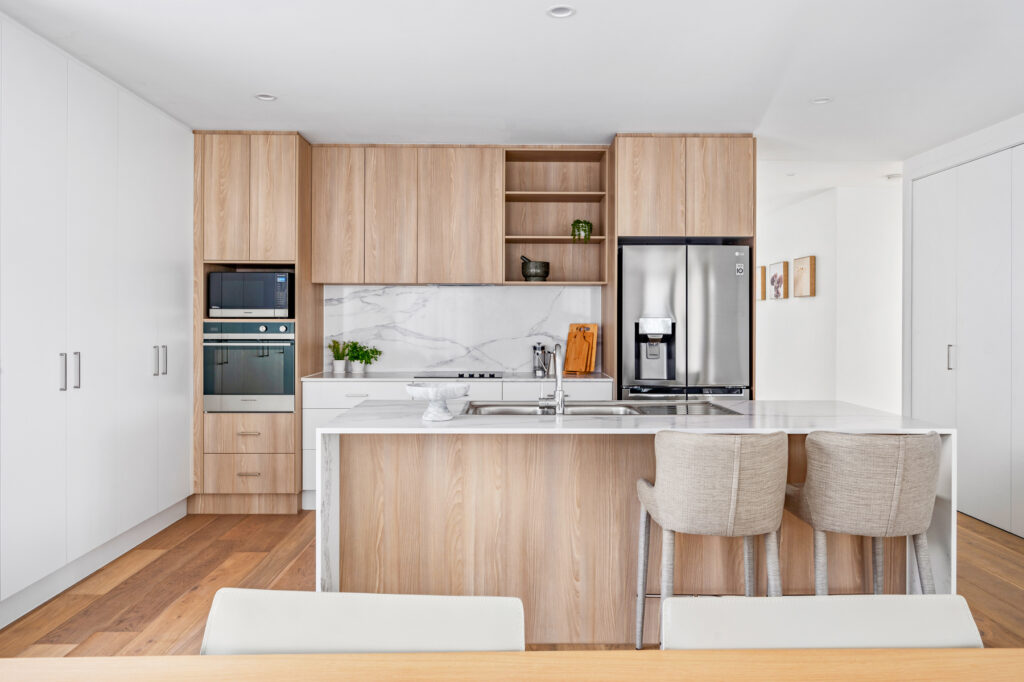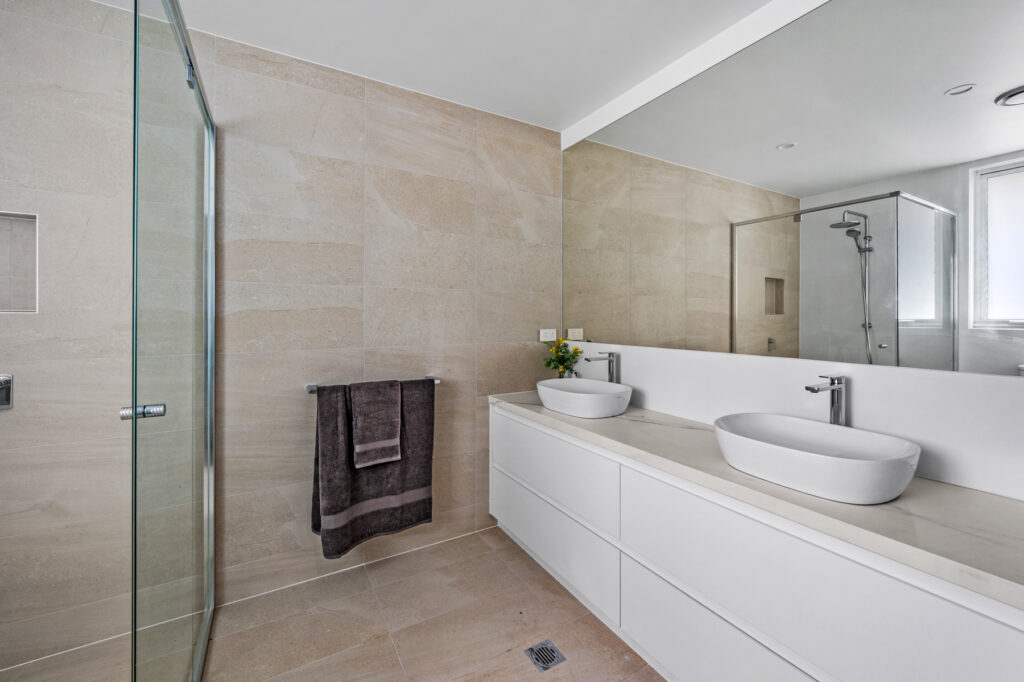
Understanding Retirement Living
What does retirement living mean in Australia?
Retirement living in Australia refers to purpose-built communities designed to support independent living for individuals aged 55 and older. Retirement villages provide various accommodation options, such as self-contained villas and apartments, offering residents privacy and comfort without the responsibilities of maintaining a large home.
For many, the decision to downsize from the family home can feel daunting, but managing a spacious, underutilised property often becomes impractical over time. Retirement villages address this by offering thoughtfully designed living spaces tailored to meet the needs of retirees.
Alongside these homes, residents enjoy a variety of modern amenities, such as swimming pools, bowling greens, libraries, fitness centres, cinemas, cafes or bars, and communal spaces for socialising. Private dining rooms are typically also available, allowing residents to host loved ones while benefiting from shared facilities when needed.
In addition to promoting active and fulfilling lifestyles, retirement villages provide access to discreet support services like allied health care and in-home medical assistance, allowing residents to live independently while knowing help is available if needed.
Retirement living is ideal for individuals or couples who seek a secure, low-maintenance environment where they can enjoy their retirement as part of a vibrant and supportive community.
How does a retirement village operate?
Unlike residential aged care homes, which serve higher-level care needs, retirement villages operate independently from the aged care system. They focus on offering a lifestyle that balances autonomy with convenience, enabling residents to maintain their independence while enjoying a range of on-site facilities and services.
Financially, moving into a retirement village typically involves an entry fee, followed by ongoing costs for utilities, council rates, maintenance, insurance, and optional personal services. These costs are transparently structured to cover shared and individual needs, ensuring the community remains well-maintained and functional.
Importantly, residents in retirement villages have access to the same government and private support services available to those living in private homes. This allows them to remain in control of their lifestyle while benefiting from the security, social opportunities, and low-maintenance living a retirement village provides.
What types of accommodation and services are available in a retirement village?
Retirement villages balance independence and convenience, offering various accommodation options and services.
Accommodation Options
Retirement villages are typically made up of self-contained villas or apartments. Features often include:
- Open-Plan Living Spaces: A layout incorporating a kitchen, dining area, and living room.
- Bedroom Configurations: Options range from single-bedroom to multi-bedroom layouts.
- Ensuite and Bathrooms: Modern bathrooms, often including an ensuite for the master bedroom.
- Laundry Room
- Outdoors Areas: Private patios, balconies, or gardens.
Services and Amenities
Retirement villages offer services and amenities that promote an active, low-maintenance lifestyle, such as:
- Health and Wellness:
- On-site fitness centres, yoga and Pilates studios.
- Heated swimming pools for recreation and exercise.
- Access to allied health professionals and optional in-home medical support.
- Social and Recreational Activities:
- Communal spaces such as libraries, art studios, and lounges.
- Group activities, organised events, and clubs to promote community engagement.
- Facilities like bowling greens and billiards tables for leisure.
- Dining and Hospitality:
- On-site cafés and restaurants.
- Private dining rooms, outdoor dining, and BBQ areas for family gatherings and special occasions.
- Lifestyle Amenities, such as:
- On-site hairdresser and massage services.
- Private cinemas and entertainment spaces.
- Concierge Services, such as:
- Appointment assistance
- Transport arrangements
- Daily needs management: Services like mail collection, parcel handling, and other small tasks for day-to-day living.
At Green Ridge Hunter Valley, we offer all of the above and much more, ensuring you can experience retirement living to the fullest. Contact us today to discover the luxury lifestyle that awaits you.
What are the benefits of moving into a retirement village?
Retirement living provides a supportive environment that greatly enhances residents’ quality of life. The benefits include:
- A Sense of Community: Retirement villages promote a welcoming environment where residents can form meaningful friendships and enjoy a strong sense of belonging.
- Safety and Security: Villages are designed with safety in mind, often featuring gated entries, security systems, and 24/7 emergency assistance.
- Low-Maintenance Living: Residents can enjoy the comfort of their own homes without the hassle of maintaining unused spaces.
- Access to Professional Support: While retirement villages are designed for independent living, many offer access to health and wellness services, including allied health professionals and in-home medical support if needed.
- Communal Facilities: Villages often feature shared amenities such as fitness centres, libraries, private cinemas, and dining spaces, enabling residents to pursue hobbies, stay active, and engage with others.
- Flexibility and Independence: Unlike aged care, retirement villages allow residents to live independently in their own homes.
- Active and Enriching Lifestyle: From fitness classes to social clubs, retirement villages provide activities that encourage physical, mental, and social well-being.
- Convenient Location: Many villages are situated close to essential services such as shopping centres, medical facilities, and public transport, making day-to-day life easier to manage.
What is the difference between a retirement village and aged care?
Retirement villages and aged care residences are designed for retirees and the elderly, yet they cater to different needs and serve distinct purposes. While retirement villages focus on maintaining independence, aged care facilities focus on providing high-level care for individuals who require ongoing medical attention or assistance with daily activities. Here’s a breakdown of how they differ:
Retirement Village
Focused on lifestyle choices
Retirement villages are designed for mobile, independent, and active seniors. They promote a comfortable, self-sufficient lifestyle and offer the option to engage in social, recreational, and health-related activities.
Private agreements for residency
Residents enter into a private agreement, often through purchase or lease, to secure their accommodation.
Engagement in community and activities
Retirement villages often offer a strong sense of community, with social clubs, fitness classes, and entertainment spaces to keep residents connected and active.
Self-funded living options
Typically, retirement villages are funded through residents’ personal finances, superannuation, or pensions.
Aged Care Residence
Focused on care needs
Aged care homes are specifically designed for people who need more medical and personal care. These facilities are ideal for seniors who can no longer live independently due to health issues or reduced mobility.
Eligibility determined through assessment
Access to aged care is granted based on an assessment by an Aged Care Assessment Team (ACAT), which evaluates an individual’s care requirements and determines their eligibility for various government-funded care and support services.
Government assistance available
Many aged care residences offer government subsidies to eligible individuals, helping to reduce the financial burden.
24/7 care and support
Aged care facilities provide continuous, round-the-clock care, including nursing services and assistance with daily tasks such as bathing, dressing, and medication management.
Comprehensive cost structure
The cost of aged care is divided into accommodation, care, and living expenses, with fees varying between providers. Residents may be required to contribute to these costs based on their financial means, so it’s essential to understand the total cost breakdown.
Cost of Retirement Living
What is the cost of living in a retirement village in Australia?
The cost of living in a retirement village in Australia can vary significantly based on location, accommodation type, and services provided.
Entry Fees
Residents typically pay an entry fee, which can either be a lump sum or a refundable deposit, depending on the retirement village. Some retirement villages require an upfront purchase or lease payment, ranging from AUD $200,000 to over $1 million depending on location and unit type. However, some premium locations and larger units may exceed this range.
Ongoing Fees
Ongoing fees cover the maintenance of common areas and services provided to residents, such as landscaping, community spaces, and sometimes healthcare services. These fees, commonly referred to as service or maintenance fees, typically range from $100 to $1,000 per month.
The amount can vary depending on the village’s size, location, and the additional amenities available. Larger or more service-oriented villages may have fees towards the higher end of this range.
Exit Costs
Exit fees are applied when leaving a retirement village and are structured to reflect the length of your stay and the terms of your contract. On average, these fees are around 30%, with variations depending on the village and duration of residence.
Can I rent in a retirement village, or is purchasing necessary?
Many retirement villages across Australia provide a purchasing and renting option. Residents may be able to choose the arrangement based on their needs and financial situation.
Purchasing
In most retirement villages, residents have the option to purchase their accommodation, though this often involves a long-term lease or a ‘loan or licence to occupy’ agreement. This means that while the village operator typically owns the property, residents can live in the accommodation for an agreed period, often under a 99-year lease.
Some villages also offer freehold or strata title ownership, allowing residents to own their unit outright and benefit from any potential capital gains when selling. In these cases, ongoing service fees apply to cover the costs of maintaining common areas and amenities.
Renting
For those who prefer flexibility, some retirement villages also offer rental arrangements, where residents pay a regular rental fee without needing a large upfront payment. This model is typically seen in villages that offer a ‘licence to occupy’ or a similar structure. Renters may still be responsible for additional service and maintenance fees, much like those who purchase their accommodation.
It’s always advisable to check with individual villages to see what options they provide and understand each contract’s terms and conditions.
Practical Considerations for Retirement Living
What are the steps to move into a retirement village?
Moving into a retirement village is a significant step in transitioning to a new chapter of life. Here are the key steps to help guide you through the process:
1. Research and Select a Village
Start by exploring various retirement villages that align with your lifestyle and preferences. Consider factors such as location, accommodation options, available services, and community amenities to find a place that fits your needs.
2. Book a Tour
Once you’ve shortlisted your options, schedule tours of the villages you’re interested in. Visiting in person provides insight into the community, the quality of accommodation, and the facilities available. It’s also a chance to ask about specific services, rules, and any other questions you may have.
3. Seek Independent Advice
Consult with financial planners or retirement village consultants who can offer expert guidance on the financial aspects of retirement living. Independent advice helps you understand the costs, contract terms, and potential long-term implications of your decision.
4. Understand the Costs and Contract Terms
Familiarise yourself with the full range of costs involved in retirement living, such as entry fees, ongoing charges, and exit fees. Retirement villages may have varying fee structures, such as deferred management fees (DMFs), so it’s important to understand your financial commitment. Always read the contract carefully and ask questions if any terms are unclear.
5. Check Eligibility and Financial Requirements
Retirement villages may have specific eligibility criteria, such as age requirements or financial thresholds. It’s essential to check if your pension or income is sufficient to cover living costs and whether you need to make any financial arrangements before moving in.
6. Sign a Contract and Complete the Application
Once you’ve found a village that meets your needs, you’ll sign a contract outlining your rights, responsibilities, and entitlements. Some contracts may include a ‘cooling-off’ period, allowing you to change your mind. Be sure to thoroughly review all terms before proceeding.
7. Finalise Your Move
After signing the contract, you can begin organising your move. This may include selling your home, transferring assets, and arranging transport of your belongings.
8. Move In and Settle
After the paperwork is complete and you’ve moved into your new home, take the time to settle in and familiarise yourself with the community and its amenities. Engaging with new neighbours and exploring everything retirement living offers will help you feel comfortable and at home.
At Green Ridge Hunter Valley, we provide a seamless process to help you make the most of your retirement lifestyle. Contact us today to discover luxurious, independent living designed for you.
Can I reserve a specific retirement property?
You can often reserve a specific retirement property, particularly if there are limited units or you’re waiting for one to become available. The reservation process may vary by village, so it’s best to contact them directly to inquire about availability and secure a property.
Life in a Retirement Village
How can I determine if independent living is right for me?
Independent living in a retirement village can be ideal if managing a traditional home has become a burden. It allows you to enjoy your time without the constant upkeep of a large property. Signs that independent living might be right for you include:
- Home maintenance feels overwhelming – Caring for a large home can become tiring, especially if you no longer require all the space. Independent living offers the right amount of space, with optional extras available only when needed.
- Your current home or neighbourhood doesn’t suit your needs – Perhaps your home has too many stairs, or the neighbourhood lacks the amenities you need. Independent living offers convenience and accessibility within a close-knit community.
- You’re seeking a safe and secure environment – Retirement villages are designed with safety in mind, often featuring security measures like gated access and emergency call systems. This added level of security can offer peace of mind, allowing you to feel comfortable and protected in your new home.
- You wish to remain independent but with some support – Independent living provides autonomy while ensuring that support is nearby if needed, allowing you to enjoy retirement without compromising freedom.
- You’re looking for a social community. Retirement villages provide community and independence. Social activities and communal spaces make engaging with people easy.
- You want access to amenities and leisure activities – Retirement villages often offer amenities like fitness centres, pools, and organised events, enhancing your lifestyle without venturing too far from home.
Are pets allowed in retirement villages?
Many retirement villages welcome pets, understanding that they’re a cherished part of life. Policies vary between villages, but many allow pets as long as they don’t disturb other residents or damage communal areas. Some communities may permit up to two pets, while others may impose some restrictions. It’s best to check each village’s pet policy to ensure you and your pet can settle comfortably.
Can relatives and friends stay overnight in a retirement village?
In a retirement village, your home is yours to enjoy as you see fit. Most villages are flexible about visits from family and friends, allowing overnight stays so you can host loved ones.
What happens if my needs change or my health deteriorates while living in a retirement village?
Retirement villages are designed for independent living, so they may not automatically provide medical or advanced care if your needs change. Some villages, however, may offer on-site support services or have nearby partnerships that can assist with your changing needs. For example, certain villages can arrange a move to on-site aged care, while others might help coordinate care or relocation to nearby facilities if required. Not all villages provide these options, so confirming the available support with any prospective village is essential to ensure you’ll have assistance if your health or mobility needs evolve.




